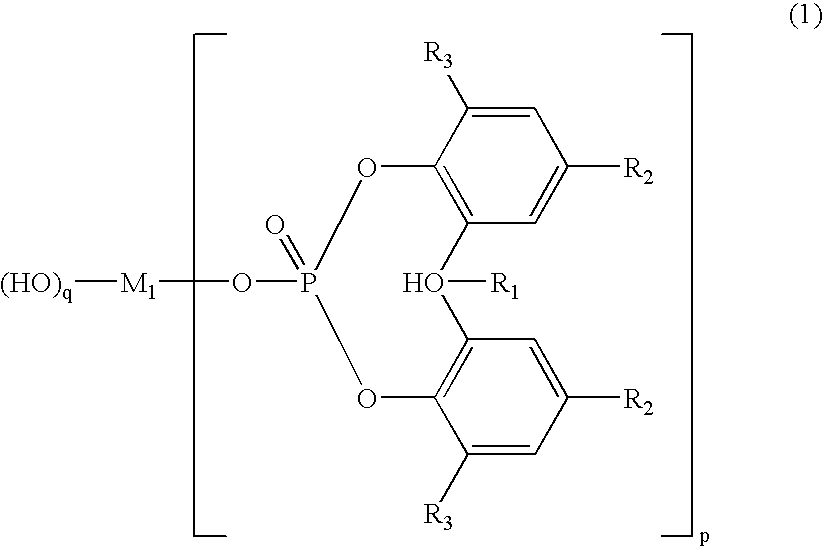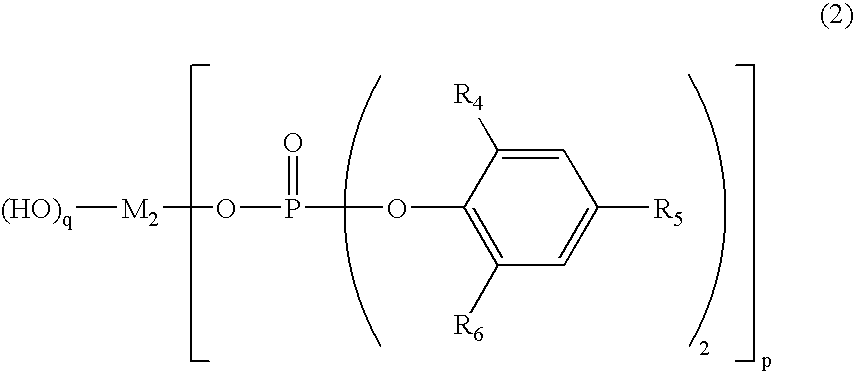Polylactic acid-based resin compositions, molded articles and process for producing the same
- Summary
- Abstract
- Description
- Claims
- Application Information
AI Technical Summary
Benefits of technology
Problems solved by technology
Method used
Image
Examples
examples
The present invention will now be described in further detail with reference to several examples, which are not intended to limit the scope of the invention in any way.
examples 1 through 5
are embodiments of the first and the second aspects of the invention.
example 1
A set of components shown in Table 1 were dry-blended with one another, and the mixture was melted and mixed in a biaxial kneading extruder at 200° C. for an average time period of 4 minutes and was extruded from a mouthpiece into strands. The strands were then water-cooled and cut into pellets of a polylactic acid-based polymer composition comprising a nucleating agent. The measurements taken of the resulting pellets on a DSC gave a crystallization peak temperature of 105° C., a crystallization-initiating temperature of 116° C., a crystallization-terminating temperature of 95° C., and a heat of crystallization of 35 J / g.
The resulting pellets were vacuum-dried at 80° C. until absolutely dry and were then injection-molded with the mold temperature kept at 100° C. and the cooling time at 45 seconds. This gave a sample piece for the evaluation of physical properties according to JIS. The results of the evaluation of the sample piece are shown in Table 2 below.
PUM
| Property | Measurement | Unit |
|---|---|---|
| Temperature | aaaaa | aaaaa |
| Percent by mass | aaaaa | aaaaa |
| Percent by mass | aaaaa | aaaaa |
Abstract
Description
Claims
Application Information
 Login to View More
Login to View More - R&D
- Intellectual Property
- Life Sciences
- Materials
- Tech Scout
- Unparalleled Data Quality
- Higher Quality Content
- 60% Fewer Hallucinations
Browse by: Latest US Patents, China's latest patents, Technical Efficacy Thesaurus, Application Domain, Technology Topic, Popular Technical Reports.
© 2025 PatSnap. All rights reserved.Legal|Privacy policy|Modern Slavery Act Transparency Statement|Sitemap|About US| Contact US: help@patsnap.com



